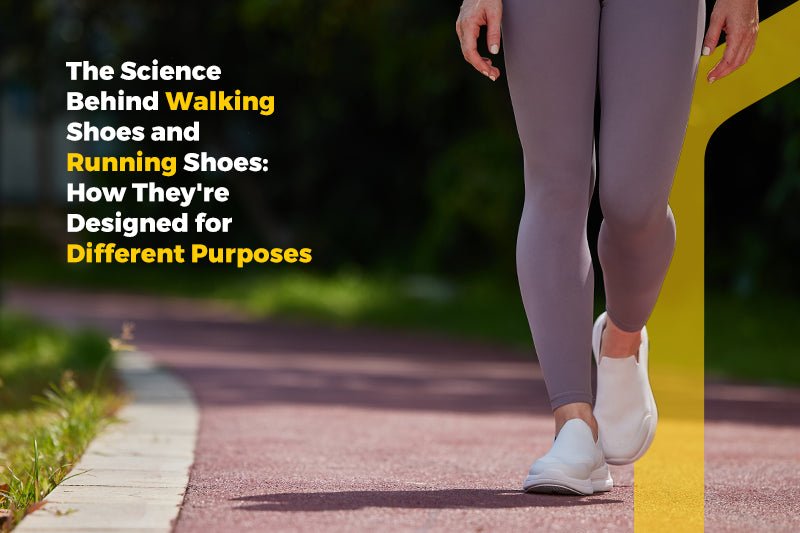The Science Behind Walking Shoes and Running Shoes: How They're Designed for Different Purposes

Walking and running are two popular forms of exercise that require specialized footwear to maximize performance, prevent injuries, and enhance overall comfort. Have you ever wondered why walking shoes and running shoes differ in design? In this blog post, we'll delve into the science behind walking shoes and running shoes, exploring how they're meticulously crafted to cater to the specific needs of each activity.
Biomechanics: Understanding the Movements
First of all, we’d need to understand the biomechanical difference between walking and running.
Walking and running involve different biomechanical movements. When walking, our feet follow a rolling motion, transitioning from heel to toe. Running, on the other hand, involves a more dynamic and forceful step, with moments of both feet off the ground simultaneously during the flight phase. The design of walking shoes and running shoes takes into account these unique movements to optimize performance and reduce pressure on the feet and lower limbs.
Impact: Cushioning and Shock Absorption
Running generates higher shock forces compared to walking due to the faster pace and increased landing impact. Running shoes are designed with additional cushioning in the heel and forefoot areas to absorb these higher forces, minimizing the impact on joints and muscles. Walking shoes, although they also provide cushioning, prioritize distributing forces more evenly throughout the entire foot to support the rolling motion and reduce strain on the joints. The sole of FitVille Women's EasyTop Diabetic Shoes consists of a high rebound EVA sole that provides stable support and shock reduction while distributing impact more evenly.
Flexibility: Striking the Right Balance
Flexibility plays a crucial part in the design of walking and running shoes. Walking shoes typically have a more flexible sole to facilitate the natural heel-to-toe rolling motion and provide a smoother walking pattern. Running shoes on the other hand have a balance of flexibility and stability to support the forward propulsion and maintain stability during faster movements. The right level of flexibility in each type of shoe ensures optimal energy transfer and reduces the risk of injuries. The FitVille Women's BriskWalk Recovery Slip-On Shoes combines a dual-density midsole, a rubber outsole, a heel pad, and a heel ring into one ultimate sole solution for cloud-like comfort on every step.
Arch Support: Stability and Pronation Control
Arch support is another important consideration in walking and running shoe design. Walking shoes often provide more structured arch support to promote stability and prevent excessive pronation or inward rolling of the foot. This stability is essential for maintaining proper foot alignment and preventing discomfort or injuries during walking. Running shoes may offer different levels of arch support depending on individual pronation patterns and running style, providing the necessary control and stability to enhance performance and prevent overuse injuries. The FitVille Women's Rebound Core features a patented PropelCore™ sole that will make your daily walk more comfortable.
Breathability and Weight: Enhancing Comfort
Both walking shoes and running shoes prioritize breathability and weight for enhanced comfort during exercise. Running shoes often feature lightweight and breathable materials to keep the feet cool and reduce the overall weight of the shoe, promoting agility and air circulation while reducing fatigue during high-intensity activities. While walking shoes also offer breathability, they tend to provide more durability and support, as walking is typically a lower-impact activity. FitVille Women's LiteWalk Walking Shoes V3 uses ultra-lightweight material (195 grams per shoe) and a breathable mesh upper to keep your feet dry and fatigue-free.
About FitVille Footwear
Just Follow us on LinkedIn, Facebook, YouTube, Instagram, RSS feed and Pinterest to catch our brand news.
What FitViller Prefers
Best Shoes to Buy

Popular Men's Shoes

Popular Women's Shoes
































